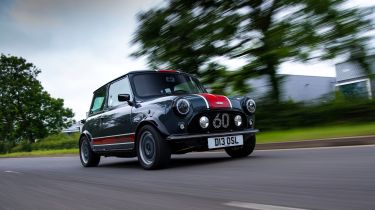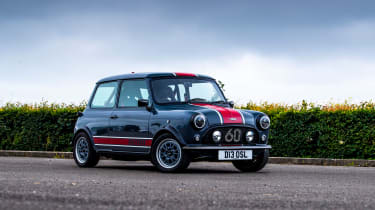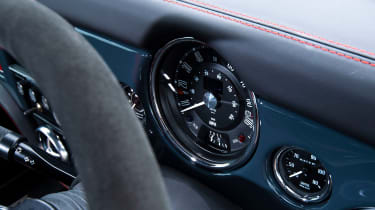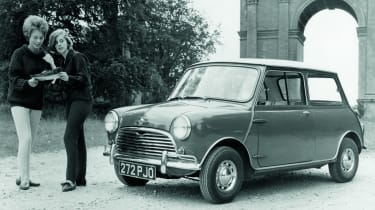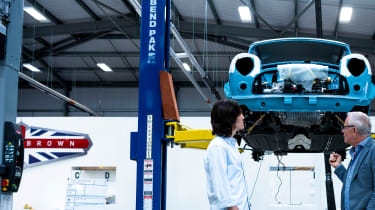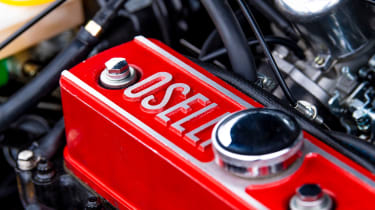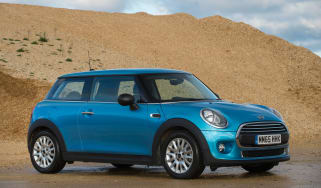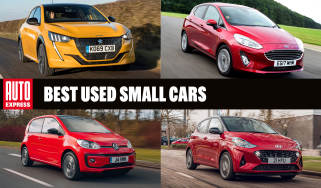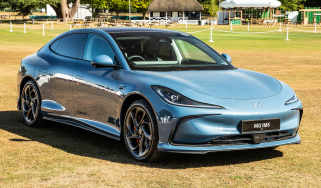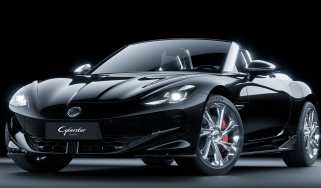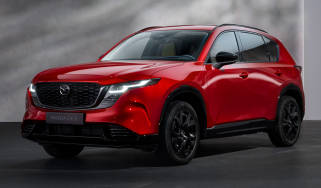David Brown: remastering the Mini
Three years after our first visit to David Brown Automotive, we return to talk remastered Minis, rainbows and unicorns
Since it was founded back in 2013, David Brown Automotive has carved out a name as a purveyor of immaculately manufactured models that celebrate the evocative lines and driving pleasure of British cars from the 1960s, but with modern reliability and drivetrains.
Back in 2018, we dropped by DBA’s Silverstone facility to meet the firm’s founder, David Brown, who gave us a tour of his workshop and walked us through the finer details of his then-latest creation – the 503bhp Speedback GT. Now, we’re back for another visit, both to check on how the business has managed during the pandemic and to get an inside look at the latest version of the company’s Mini Remastered.
Three years after our visit, Mini Remastered production is in full swing. The company has already finished 70 cars, and hopes to churn out 100 examples a year.
But why add the Mini to the company’s line-up? “The Speedback is immensely time-consuming to make,” Brown says. “We wanted to make something that would get more volume through the business. So, there wasn’t much debate about what that should be, because the Mini is one of the most iconic cars, almost ever.
“You can do anything with a Mini,” he tells us. “You can stick a motorbike engine in the front, you can make it handle like a go-kart, you can do whatever you want to do. As a blank canvas, it’s absolutely brilliant to start with.” Crucially, though, David said, “We didn’t want to lose the Mini-ness of a Mini.”
David begins to talk us through his brief for the Mini Remastered with a short anecdote. “I’ve got two heroes,” he says. “My Dad; he’s dead. Roger Daltrey; he’s not. And my Dad’s view on the Mini was that it was one of the best-engineered cars in the world, but the worst manufactured. So, a gigantic part of what we set out to do was to remove that worst-manufactured element.”
We’d say he’s achieved that. The Mini Remastered is the best-built original Mini we’ve driven to date, and it still has all the quirks that make the car so charming.
The doors clang like a tin shed when you shut them, the engine is gruff, and the speedo is a yesteryear Smiths unit with a needle that bounces around the rough speed you’re travelling, rather than reading a fixed figure.
These period features are backed up by a rock-solid shell, stronger mechanicals, and electrics that work every time – a rare treat in a British car of this vintage.
DBA’s engineering team is also pathologically detail-obsessed, and has an eye for quality on par with most German car manufacturers. For example, every Mini Remastered’s body shell is deseamed, which means the drainage channels that usually run down the A and C-pillars have been removed for a cleaner look.
Normally, this is done by hacking the seams off with an angle grinder, welding up the gap and skimming over the imperfections with filler. As you would expect, though, this isn’t anywhere near as sturdy as a standard bodyshell, because you’re relying on the welding joint between two one-millimetre-thick panels to hold the car together, rather than having the load spread out over a quarter-inch seam.
DBA has a different approach. It starts by cutting the seams off, but then reinforces the pillars with beams before welding the panels shut. So the shell is stiffer than when it was first designed – and you really can feel it on the road.
Most importantly, the only thing between those panels is welding wire and steel. There’s almost no filler in the Mini Remastered, since that gives the shell the best chance of resisting corrosion. Any classic Mini owner who’s sent their pride and joy to a bodyshop that didn’t know what it was doing will tell you filler is hydroscopic and, if moisture gets under the paintwork, it’ll eat the car from the inside out.
David was well acquainted with the Mini’s most famous foible. By his words, the rust problem affected even cars that had just rolled off the production line. He tells us: “My first car, SVB 240N, was an orange Mini. Most of the orange was actually rust and it was new. Brand new.
“The first thing you did when you bought a Mini was to go and buy a load of underseal. You would take it home, jack it up, stick it on some bricks and get underneath with a tin of this underseal and pour it on there. All you were doing was trapping the rust that was already in there!”
By this point we’re meandering around David’s workshop, taking in some of the finer details of the green Mini he keeps for nipping to the shops, or lending to journalists. And we notice that the guttering around the roof isn’t standard – it’s flat rather than being curved.
It turns out that the standard roof looked a bit ungainly against the cleaner pillars, so DBA’s panel beaters spent hours cutting the channel flush with the roofline, and beating out the ripples in the panel; it’s craftsmanship like this that really puts some credibility behind the car’s lofty price tag. It’s effective, and discernible from the original, but subtle enough not to catch the eye.
Fabrication is one thing, but customisation is also core to the work of DBA. Its facility has a purpose-built room above the workshop, where customers can design their perfect car – and David has had some unusual requests.
“We’ve got a guy in Canada,” he says. “Billionaire. Flew across in his private jet, landed at Oxford, came here one Saturday to get a Mini Remastered. I think it was going to be grey with a red interior and relatively standard.
“By the time he’d left, he’d specced one up that had a yellowish interior, but it was also rainbow colours on the outside because his grandkids like unicorns. And he was extraordinarily precise about where he wanted his stripes to go. He didn’t want them to finish flush – he wanted them to blend. But he only wanted them to blend by 12.5mm.”
David got another head-scratcher from the client once his team had finished piecing the Mini together. “We painted this rainbow car,” he said, “shipped it to Canada and then we got a call from the guy’s shipper. He asked us ‘How much does the rear seat weigh?’ So, we weighed one and sent the information back with a question like ‘Why?’
“And the reason why was he was taking as many bits out of it as he could, putting it in a lift shaft, taking it up to the top of his skyscraper where he’s got an art exhibition. And this thing sits there, burning through his warranty!”
Finally, we press David about his plans for the future, but he remains tight-lipped, saying: “I think there’s a great deal we can still do with the Mini. But we wouldn’t be averse to doing anything that somebody wanted.
“One day I’d like to see us doing a pick-up. Do that and it becomes almost a bit of a workhorse, maybe a bit less luxurious. But the only thing I’d say is that right now, we’ve got enough on just satisfying the customers we’ve got. ”
Tuned classic Minis have been popular almost since the first cars rolled off the production line. In 1964, Austin offered a 1,275cc Cooper S variant that was specifically designed for racing – and David Brown Automotive has carried that attitude forward into the 21st Century with its Oselli Edition.
When it was launched, the 1,275cc Cooper S cost about £800. Adjusted for inflation, that works out at around £16,000 in today’s money, although immaculately preserved examples regularly change hands for more than £30,000 at auction. The Oselli Edition is priced from £98,000, primarily due to the amount of fabrication that goes into each one.
Both cars are powered by four-cylinder A-Series engines, fed by twin carburettors. However, David Brown’s effort benefits from a greater cubic capacity, tighter engineering tolerances and a far more modern electrical system, which means it would run rings around its grandmother – as you can see in the table above, with a comparison of the cars’ specs.
Read our review of the original David Brown Mini Remastered
Find a car with the experts

